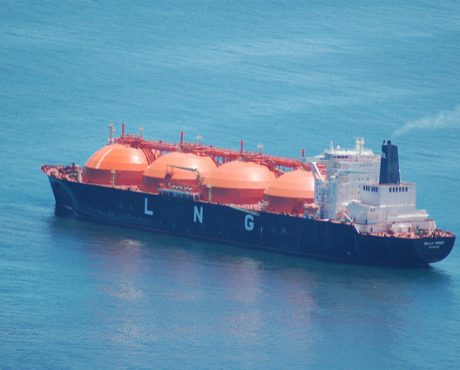This Quiet Industry Pays Out Dividends
Did you catch this story?
Last week, China entered its first long-term contract to buy U.S. liquefied natural gas (LNG). Under the deal, China National Petroleum will purchase 1.2 million tons of LNG per year from Cheniere Energy, Inc. (NYSE:LNG) through 2043.
“We are pleased to announce these LNG contracts with China National Petroleum Corporation,” said Cheniere CEO Jack Fusco. “[China National Petroleum is] an important global energy player in one of the largest and fastest-growing LNG markets world-wide.” (Source: “China Signs First Long-Term Deal for U.S. Natural Gas“, The Wall Street Journal, February 9, 2018.)
The story didn’t get a lot of coverage in the press. But for industry analysts, the move represents a colossal shift in the American energy industry. And for investors capitalizing on this boom, we have an opportunity to lock in income streams ranging from seven percent to even 15%.
Here’s the scoop.
Global energy markets have undergone a massive shift over the past few years, and America could emerge as the world’s most important exporter of oil and natural gas.
Most people don’t know that, of course. The public still thinks of our country as reliant on hostile foreigners to meet our energy needs.
But that’s changing. New technologies, namely hydraulic fracturing and horizontal drilling, have unlocked vast domestic resources. That has created a supply glut stateside, with U.S. energy prices now some of the lowest in the world.
Right now, natural gas sells for around $2.60 per thousand cubic feet (MCF). Prices have dropped so low, in fact, that most energy producers will flare (industry jargon for “burn off”) any natural gas they find. It’s too expensive to collect the supplies and ship that product to refineries.
Overseas, the situation looks totally different. A lack of domestic supplies have sparked chronic shortages around the world. In Europe, natural gas sells for around $7.50 per MCF And in Asia, it goes for approximately $10.00.
This difference has sparked an American export boom.
Previously, the U.S. exported almost no natural gas. The country didn’t have any of the needed infrastructure needed to store, cool, and process needed to ship LNG.
That changed last year with the completion of several new LNG export facilities. For 2018, analysts project the lower 48 states could ship out six billion cubic feet per day (Bcf/d). For perspective, that number represents enough energy to power all the houses in California, Florida, and Texas combined. (Source: “After Six decades, U.S. Set to Turn Natgas Exporter Amid LNG boom,” Reuters, March 29, 2017.)
And that could be just the beginning. Thanks to help from the Trump administration, the government has pushed to help U.S. energy supplies access global markets. According to a recent report by the Energy Information Administration, American net natural gas exports could reach a high of 23 Bcf/d by 2050. (Source: “The United States Is Projected to Become a Net Energy Exporter in Most AEO2018 Cases,” U.S. Energy Information Administration, February 12, 2018.)
This difference has created a opportunity for investors.
The industry will need to invest $14.5 billion to $18.8 billion per year for the next few decades to accommodate growing production, according to an estimates by the Interstate Natural Gas Association. This will mean building everything from tankers and export terminals to storage and distribution facilities. (Source: “North American Midstream Infrastructure Through 2035: Leaning into the Headwinds,” Interstate Natural Gas Association of America, April 12, 2016.)
Pipeline represent a lucrative business in this scenario. We have a big mismatch from where our natural gas gets produced and where it’s needed. For this reason, midstream names like Enbridge Inc (NYSE:ENB), Kinder Morgan Inc (NYSE:KMI), and Williams Companies Inc (NYSE:WMB) pay out mid-single-digit (and growing) dividends.
LNG export terminals have found themselves smack in the middle of this boom. Cheniere Energy, mentioned above, earns tidy toll revenue on each cubic foot of gas that flows through their network. As U.S. production ramps up, then this business could become a cash cow.
Finally, LNG shippers like Golar LNG Limited (NASDAQ:GLNG), Teekay LNG Partners L.P. (NYSE:TGP), and Dynagas LNG Partners LP (NYSE:DLNG) should do well too. These partnerships work like the ferry boat operators of the energy business, taking a small cut on each tank shipped over the ocean. And once you have one of these businesses up and running, they generate an enormous amount of cash flow for unitholders.
| Name | Market Cap | Yield |
| Dynagas LNG Partners LP (NYSE:DLNG) | $562.7M | 15.7% |
| Hoegh LNG Partners LP (NYSE:HMLP) | $689.3M | 9.6% |
| Enbridge Inc (NYSE:ENB) | $72.7B | 6.2% |
| Williams Partners L.P. (NYSE:WPZ) | $38.5B | 6.1% |
| Teekay LNG Partners L.P. (NYSE:TGP) | $1.5B | 3.0% |
| Kinder Morgan Inc. (NYSE:KMI) | $37.9B | 2.9% |
| Golar LNG Ltd. (NASDAQ:GLNG) | $2.3B | 0.7% |
(Source: Google Finance, last accessed February 16, 2018.)
You can see big changes taking place in the energy industry. Entrepreneurs building the ships, terminals, and pipelines needed to access global markets will make fortunes.
It won’t happen overnight. But years from now, America will likely emerge as the world’s largest supplier of natural gas. And those holding the best assets could lock in lucrative income streams.
